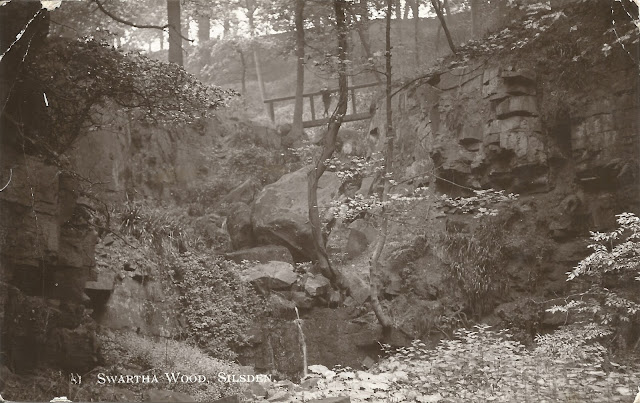Above: the old and the new at Swartha, the delightful hamlet in Hawber Lane, where the late Kenneth Boothman's former farm has been strikingly developed in the last few years. There has been an agricultural settlement at Swartha for around 800 years.
Above: this photograph was taken in May 2010 when the farm site was being cleared.
Above: Swartha's tranquil rural row of cottages is largely unchanged from yesteryear.
Above: it is difficult today to achieve an exact photographic comparison.
Above: this picture from the other end of the row of cottages offers an intriguing perspective. The mark on the reverse of this postcard is dated August 1942. The car just coming into view on the left looks to be of the 1920s/30s.
Above: Swartha Cottages, with Haw Farm to the left, are a handsome landmark farther along Hawber Lane.

Above: Swartha and its eponymous wood take their name from an Old English word meaning dark ravine. This setting was the subject of a postcard sent from Silsden in 1922. The footbridge spans Brunthwaite beck.
Above: the scene today.
Above: in this postcard dated May 1917 the footbridge and the trees upstream were viewed from the path that leads out of the wood across a field to Town Head farm at High Brunthwaite. Most of the local woods were felled after being auctioned off by the Skipton Castle estate at the end of World War 2. Timber merchants were the principal buyers, profiting from the country's rebuilding programmes. Silsden Urban District Council failed to halt the "desecration" of Swartha Wood, which it described as one of the most beautiful places in the country.
Above: the view today. Other aspects of Swartha and Swartha Wood were featured in my posts of May 2014, July 2014 and February 2015.




